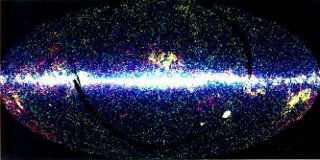Infrared astronomy started centuries ago, when Sir William Herschel proved that there was more radiation from the Sun than what can be seen in visible light. If you spread out the sunlight with a prism, just beyond where the red colors are, there is radiation there that we cannot see that will warm things up (a thermometer, for instance). We knew that there was some other radiation to measure, but Herschel’s thermometer was pretty basic. We cannot learn much about radiation from a thermometer. Later on, people started developing thermocouples and bolometers that were sensitive enough to sense the much lower levels of infrared radiation that stars and planets produce compared to the Sun. At that point very interesting things about a variety astronomical objects could be studied.
The technology developed to the point where we could make better detectors, in part, because the military needed it. Infrared is really important for seeing in the dark. Military forces need detectors, and they put a lot of effort into developing this technology. Today you can own your own night-vision glasses and heat-detecting equipment. If you go to your eye doctor, they have a special microscope that uses similar technology and mathematics to get a better picture of the inside of your eye. If you want to see better than an eagle, they can improve your eyesight as well, with this kind of stuff. It’s pretty amazing. Who would have thought that? We didn’t create these technologies for everyday purposes, but millions of people are benefitting in a completely unexpected and indirect way.
When these technologies became available for astronomers, we realized there were a whole lot of new things we could discover. History has shown that every time we get new equipment, we make amazing, surprising discoveries, things that no one ever imagined could happen. Quite a long time ago now maybe about 1973 when the Infrared Astronomical Satellite (IRAS) was launched, it had one of these wonderful new detectors. I think it had 64 pixels. Can you imagine trying to take pictures with a camera that only has 64 pixels? These days we would have 64 million pixels, but that telescope had only 64 pixels. Even with such a modest detector by today’s standards, IRAS detected over half a million infrared sources in space and made surprising discoveries.
IRAS All Sky Map: An image of the point sources observed by IRAS. Blue sources are cool stars in our Galaxy, and yellow-green sources are galaxies. Reddish sources are extremely cold material close to our Galaxy. Black areas were not surveyed by IRAS. The plane of the Milky Way Galaxy runs horizontally across the image.
Credit: NASA/JPL-Caltech


